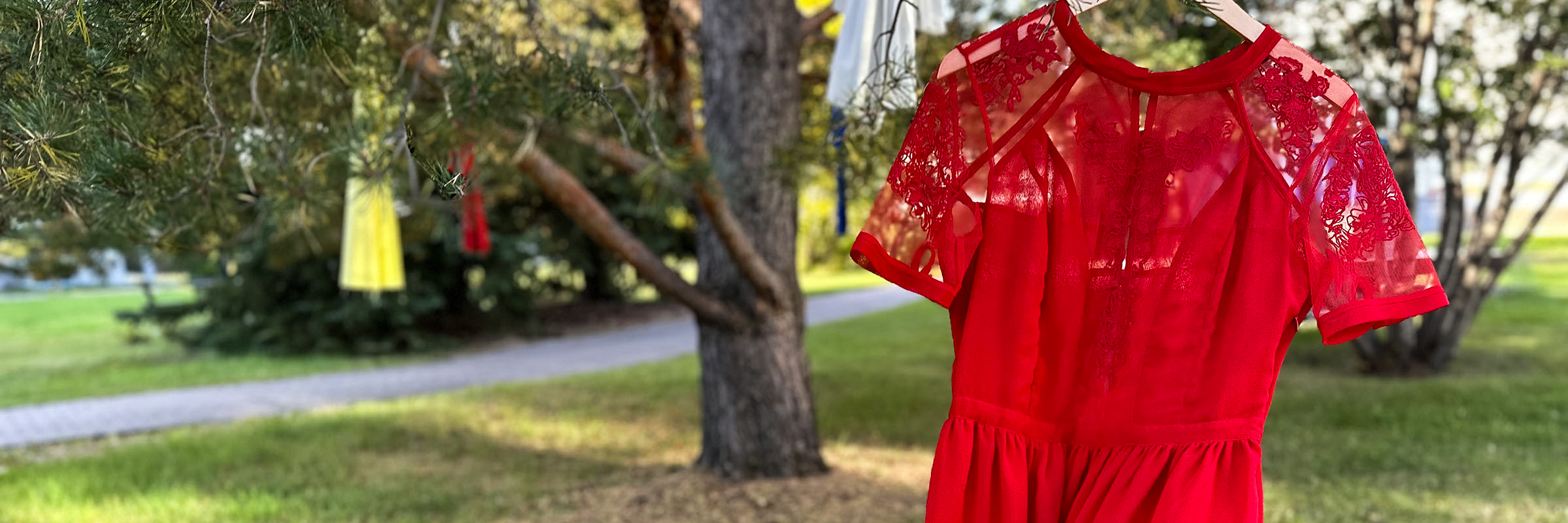Missing and murdered: The role of colonialism
Sandrine Camminga - 4 October 2023

“Indigenous women continue to experience the greatest amount of violence of any identity group in this country,” says Willow White, ’15 MA.
White is an English literature and Indigenous Studies professor at the U of A’s Augustana Campus and a member of the Métis Nation of Alberta. She’s investigating how 17th- and 18th-century stereotypes of Indigenous Peoples in English popular culture bolstered the public’s acceptance of England’s colonial takeover. During a recent alumni event, she explained how colonial violence has contributed to the ongoing crisis of missing and murdered Indigenous women, girls and two-spirit people (MMIWG2S) in Canada.
The crisis began centuries ago
“MMIWG2S is not a modern phenomenon. It is a tradition of colonialism in North America,” White says.
Many Indigenous Peoples consider Pocahontas to be one of the first missing and murdered Indigenous girls, White says. The teenage daughter of Chief Powhatan was kidnapped from her Nation by the English in 1613. White says that Mattaponi oral record states Pocahontas was sexually assaulted during this time.
“While in captivity, she was baptized, given the Christian name Rebecca and married to an older English settler, John Rolfe, with whom she had a son soon after,” says White. “In 1616, she was toured around the country as living propaganda for the Virginia Company.” She died in England at the age of 21.
John Smith, a 17th-century English colonist, wrote records that cast Pocahontas as a willing participant in these events, says White. His narrative gained traction and developed into a myth of Indigenous women welcoming colonizers. This myth covered up the violent nature of colonialism and Indigenous womens’ resistance to it, while propping up a palatable story of how Europeans settled in North America, she adds.
“The characterization gives us permission to feel OK about colonialism,” says White.
Canada’s Indian Act dismantled women’s role and safeguards
In 1876, the Canadian government established the Indian Act.
“The Indian Act devalued Indigenous women and sanctioned violence against them,”White says. The Act diminished women’s traditional roles in their communities and took away their status and Treaty rights if they married non-status or non-Indigenous people. The children and grandchildren of those unions were unable to get status, meaning neither the women nor their children had the right to live on reserve.
“This created a high-risk situation for violence,” says White, as vulnerable and isolated women and their children were cut off from their community support.
The impact continues today
Public outrage over Indigenous teenager Tina Fontaine’s death in 2014 helped prompt the Canadian government to launch a national inquiry into the issue of violence against Indigenous women and girls in 2016.
But White says many Indigenous Peoples feel that the inquiry has not been transparent and that its work has been insufficient, pointing to the recent revelation that the remains of Indigenous women currently rest in Winnipeg’s landfills.
“The process of making change and seeing these calls to justice realized seems, for now, out of reach. Until Canada is ready to truly acknowledge its colonial history, tell and teach the truth and seek justice alongside Indigenous Peoples, the violence is unlikely to stop or slow.”
White is one of many experts to speak at Augustana events. View upcoming Augustana events online.